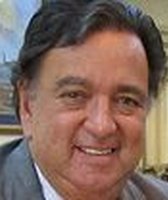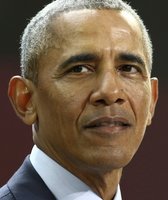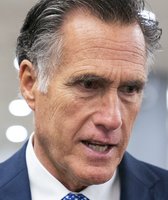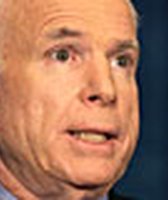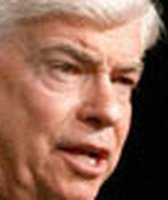Stand up for the facts!
Our only agenda is to publish the truth so you can be an informed participant in democracy.
We need your help.
I would like to contribute
SUMMARY: In making wasteful spending a presidential campaign theme, Sen. John McCain overlooks the progress that's been made.
McCain has been making the same argument for a long time: Washington wastes billions of dollars each year with the runaway practice of letting lawmakers secretly "earmark" money for projects they like.
Year after year, McCain has railed from the Senate floor on the issue, voting against appropriations bills he considered too fat, and now as a presidential candidate he is making wasteful spending a theme of his campaign.
"Earmarked dollars have doubled just since 2000 and more than tripled in the last 10 years," McCain declares on his campaign Web site. "This explosion in earmarks led one lobbyist to deride the appropriations committees as favor factories."
McCain would be right — if this were 2006.
Sign up for PolitiFact texts
Between 1994 and 2006, the amount of federal money earmarked by members of Congress for special causes went from $23-billion to $69.7-billion, according to the Congressional Research Service.
But here's McCain's problem: In 2007, earmark spending dropped to $10.5-billion. So McCain's dire claim about a growing problem comes a little too late.
Though he would have been right in 2005, he's wrong in 2007.
McCain is something of a victim of his own success and some other factors.
Good-government groups and fiscal conservatives increasingly questioned the role lobbyists could play in capturing millions of dollars for their clients by winning favor with a single, well-placed lawmaker willing to use his "earmark" power.
The chorus grew louder with the 2005 case of former Rep. Randy "Duke" Cunningham, R-Calif., who sat on the committee that appropriates federal money. He was convicted of selling earmarks to a lobbyist in exchange for everything from Jimmy Buffett tickets to a 19th century commode.
When Democrats took control of Congress in 2007, they placed a temporary moratorium on earmarks so they could look closely at how they were doled out.
That meant for fiscal 2007, there were only about $10.5-billion in pork-barrel spending projects — far less than McCain now claims.
"The '07 bills had no earmarks other than defense," said Scott Lilly, a senior fellow at the liberal-leaning Center for American Progress and former Democratic staff director of the House Appropriations Committee.
The defense appropriations bill had been approved and signed by President Bush before the moratorium was set in place.
That ban was soon lifted, but both Houses have established disclosure requirements that make it possible to identify the sponsor of an individual project, making it harder for lawmakers to be too generous.
And while there is no ban on earmarks, Bush and House Appropriations Chairman David Obey, D-Wis., said early in 2007 they were intent on cutting the dollar amount of earmarks drastically. Senate Appropriations Chairman Robert Byrd, D-W.Va., a legendary earmarker for his home state, also has said he would limit earmarks, though no one expects the Senate to be as frugal as the House.
For the first time, the Office of Management and Budget, the president's budget arm, is keeping track of earmarks in spending bills as they go through the legislative process.
In early fall 2007, OMB has compiled a list of $8.3-billion in earmarks in House bills and $12.21-billion in Senate bills for the 2008 spending year. If everyone got what they asked for so far, the total would come to $20.5-billion, even below the 1994 figure.
Lilly, who worked for Obey at the House committee, predicted that the earmarks could drop. "It's my expectation that they're going to go to half," he said.
But one former appropriator is not as sure. "It's an open question whether the commitment will be kept," said former Rep. Ernest Istook, R-Okla., who served as chairman of the transportation appropriations subcommittee while in the House. "I certainly will not take it as a given."
Perhaps the most famous earmark of all, which highlighted the problem they pose, is known as the "Bridge to Nowhere." Like most earmarks, the bridge project did not go through the appropriations committee process. In fact, it was not part of an appropriations bill, but instead was written directly into a bill on highway policy.
The law set aside $223-million for a bridge connecting the Alaska town of Ketchikan to Gravina Island. Gravina Island has 50 people living on it, making the price look awfully steep. In November 2005, Congress removed the earmark, which meant Alaska still got the money but was not required to spend it on the bridge.
But as late as July 2007, McCain was talking about the earmark as if Congress was still requiring Alaska to spend money on the bridge. "We spent $223-million on a bridge in Alaska to an island with 50 people on it," he said during a town hall meeting in Nashua, N.H., on July 25, 2007.
In talking about earmarks, McCain is still using lines that are several years old. If he checked the facts, he could actually take credit for some progress.
Our Sources
Congressional Research Service Earmarks in Fiscal 2006 Appropriations Acts
Congressional Research Service Earmarks in Appropriations Acts in Fiscal Years 1994, 1996, 1998, 2000, 2002, 2004, 2005
Office of Managment and Budget List of 2005 Appropriations Earmarks
Campaigns and Elections McCain speech transcript, July 23, 2007
McCain speech in Ankeny, Iowa Video of McCain, Aug. 4. 2007
McCain speech in Nashua, New Hampshire Eliminating earmarks, July 25, 2007
U.S. Department of Transportation Inspector General Review of Congressional Earmarks, Sept. 7, 2007

